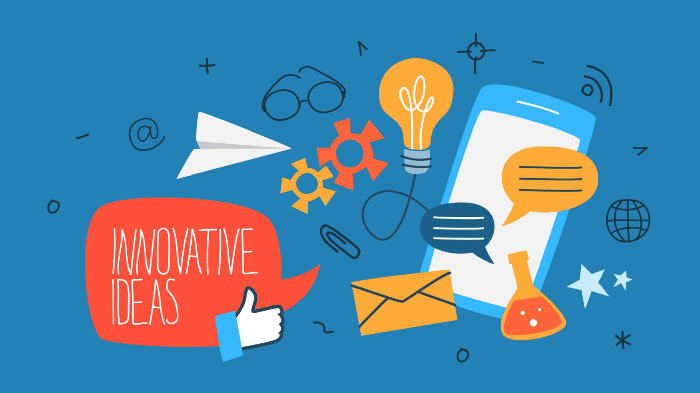
Discovery time can spawn major innovation and happier employees — but only if you do it right.
Instituting “discovery time” in the workplace can be a game changer for organizations in competitive industries that are looking for the next disruptive idea. Discovery time is a set period of time during the workday for employees to innovate and create outside of their current workload. But if it’s not implemented with the employee in mind, you may not get the results you’re hoping for.
I’ve worked with more than one CEO who implemented discovery time in the workplace but told me that it wasn’t working. Employees weren’t taking that allotted time. Or, if they did take that time, they didn’t spend it being productive. They didn’t see an increase in innovation or creative problem solving. Why did it work for other companies, but not for theirs?
The Problem Isn’t What You Think It is!
In every case where discovery time wasn’t yielding results, the problem wasn’t the employee. The problem was the way the program was implemented.
That’s because creativity doesn’t fit into a box. Think about it this way; when you’re trying to come up with a creative solution to a problem, do you find that solution when you’re forcing your brain to think about it? Or is it more likely that the solution arrives when you’re not concentrating on it?
You Can’t Force Innovation
The creative spark hits at weird times. Maybe when you’re hitting the snooze button on your alarm clock early in the morning. When you’re in the shower, or on your commute to work. Suddenly, the solution to the problem you’re struggling with presents itself, when it is the last thing on your mind.
Our brains solve problems when we are able to detach from external stimuli and activity. When we get rid of the constraints of regimented activity, like going to the office and attending the same meetings every day, our mind is free to flow where it will. Often, we are able to solve problems we have been struggling with.
Our Brain Has Default Settings?
Neuroanatomists call this detachment time the “default network.” It’s the part of our brain that works on solutions to gnarly problems. This is described in detail by Adam Waytz and Malia Mason in, “Your Brain at Work” (Harvard Business Review Special Issue, January 2019, pp. 12–13).
The “default network” is what some people describe as the part of the brain that can achieve transcendence. It’s the place we can go to in a daydream — we can imagine ourselves in a different place. We may not even be aware of where we are, or any specific problem or idea that we’re thinking about. We let ourselves go and let our brain flow. We let our thoughts flow.
I Get My Best Ideas When I’m not Racking My Brain
The problem with discovery time is that, often, employees are trying to find solutions within a finite, scheduled period of time. They are being forced to think directly about the problem and come up with ideas and solutions. Plus, they’re often distracted by external stimuli like their phones or emails. These interruptions are all factors that block creativity. Doctors pointed this out in his article, “Unleashing Employee Creativity: What Matters Most in Sustaining Creativity Engagement?” (Northwestern University, March 2013)
That’s exactly what we don’t want. We want employees to be able to turn off their email, put away their phones, and stop thinking about the problems and their solutions. We want them to relax, experience the moment, and let their brains flow. That is when their brains will be able to start the process of free association, of ideas and information, that is intrinsic to the “default network” concept. They’ll process the information that employees already have and allow innovative ideas to bubble up to the surface.
That’s when they’ll have the “a-ha” moments, after they walk away from the challenge or the problem and leave their brain alone for a few minutes.
Creating an Innovation Friendly Atmosphere
Creating the kind of atmosphere where the employees can let themselves go and allow their brains to relax is a problem. Some of the biggest tech companies in the world are grappling with this issue. It’s why Google installed “nap pods” and recreated sidewalk cafes and pubs inside their offices, so employees can relax when they need to. “You can’t schedule innovation, you can’t schedule idea generation,” Google’s David Radcliffe told CBS News in a 2013 article. The company even considers color schemes in its building designs that help employees relax, focus, and create.
Not every company has the resources that Google does. And now, when so many employees are working remotely from their home office, it’s even more challenging. Companies that are truly committed to helping their employees discover solutions and new innovations must find ways to help them tune out and turn off for a few minutes.
As a leader, suggest ways that employees can recharge their mental batteries in any available space. Create a “meditation corner” for employees to recharge. Or let them simply step away from their desk and exercise, read a book, or play a video game. Further, model that behavior as a leader by pledging to take discovery time and following through. It will not only encourage employees to follow your behavior, it will allow you to decide whether your implementation of discovery time is actually helpful.
Safe, Secure, and Empowered — Key Factors in Learning and Innovation
Teams need to feel safe, secure and empowered. Foster an environment — both in the office and remotely — where employees are allowed to disconnect and recharge. The boost in brain power — and in problem solving and innovation — will surprise you.
